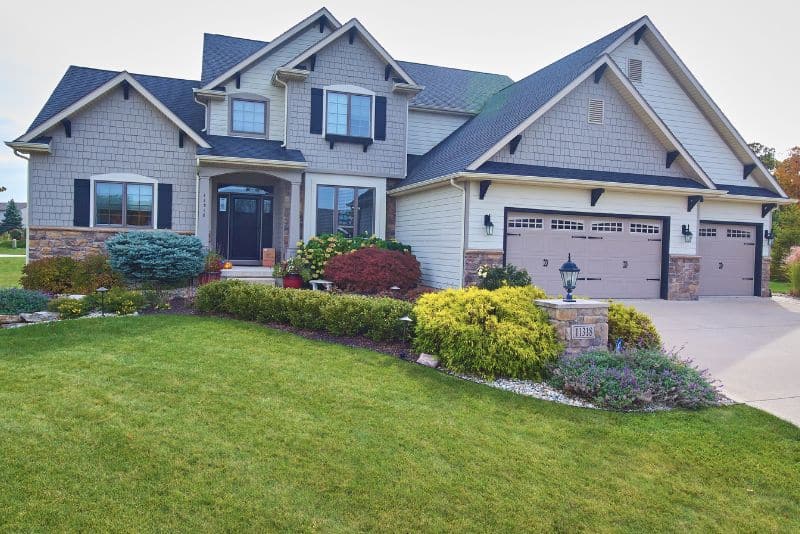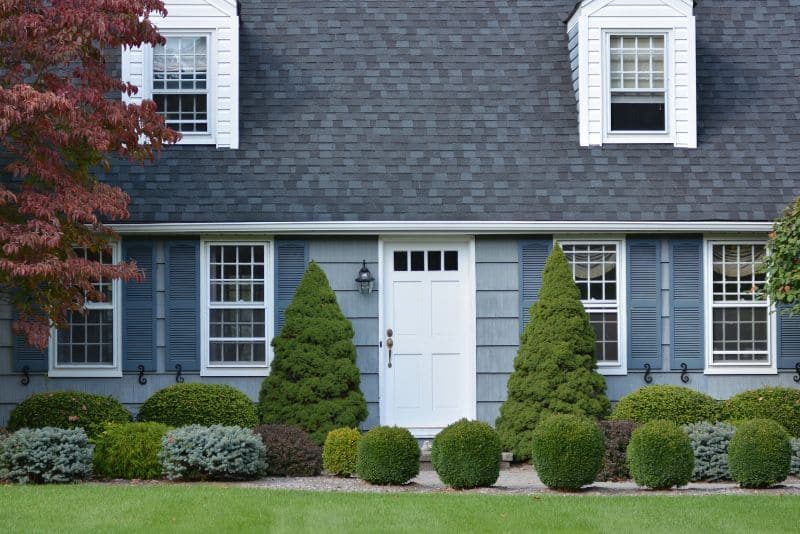Have you ever stopped to admire the beauty of a freshly painted house? Your old exterior suddenly becomes vibrant and inviting with just one coat of paint. But maintaining a home’s exterior isn’t just about the aesthetics. It’s also important to keep your home safe and comfortable for years. Regularly checking and repairing any damage is essential for avoiding costly repairs. This guide will cover all aspects of home exterior maintenance, from the basics of inspecting your home to tips on which materials to use for repairs.

1. Inspect the Roofing Elements
When inspecting your roof, ensure you’re carrying out a thorough examination of all its elements. Scan for any visible signs of damage, such as missing, loose, or cracked shingles – key indicators of potential roof issues. Pay attention to the condition of the flashing around chimneys, skylights, and roof vents, as these areas are common sources of leaks.
Additionally, check for any moss or algae growth, which can shorten the lifespan of your roof and impact its aesthetic appeal. If you need more confidence or tools to properly inspect and repair your roof, you can click here to contact experienced roofing contractors, or find some online. It’s advisable to get your roof inspected at least once a year or more frequently if you live in an area prone to extreme weather conditions.
If you live in eastern Tennessee, paying close attention to your roof’s condition is especially important due to the region’s variable weather patterns. Whether it’s heavy rain, strong winds, or occasional hailstorms, these conditions can take a toll on your roof over time. If you’re noticing any issues, consider reaching out to experts specializing in roof repair in Knoxville, as they have the experience and knowledge to address problems specific to the local climate. Timely repairs can save you money and prevent more extensive damage down the line.
2. Clean and Re-paint Your Home’s Exterior
Maintain a fresh appearance for your home by regularly cleaning and repainting the exterior. This preserves the property’s look and boosts curb appeal. Consider pressure washing with a detergent designed for outdoor surfaces to remove dirt and debris effectively. Achieve the best results with this approach.
Regarding painting, it’s essential to choose high-quality paint that will stand the test of time. As a bonus, premium paint is usually more resistant to UV light and will last up to three times longer than regular paints. The best paint for your home’s exterior will depend on the materials it is made of, so consult a professional before you begin.
3. Take Care of Your Gutters
Your home’s gutters should be checked for blockages and damage each season, which can lead to bigger issues if not addressed. Clogs caused by leaves, twigs, and other debris can cause water accumulation in the gutter system, resulting in roof leaks or foundation damage. Overflowing gutters can also attract unwanted pests and create an aesthetic problem.
Gutter covers or guards are a great way to reduce the amount of debris that clogs your gutters, making maintenance much easier. Suppose you’re looking for more permanent solutions. In that case, several high-quality gutter materials available on the market today come with warranties and require little upkeep due to their durability.
4. Secure Windows and Doors
Your windows and doors are the entry points to your home, so it’s vital to ensure they’re properly secured. Check for any signs of damage, such as cracks or warping in the window frames or door panels. If there is any damage, you should consider getting them replaced immediately.
To maintain a secure and well-insulated home, ensure functional locks and check for frame rot or deterioration. This protects from elements and deters intruders. Consider motion detectors and a reliable security system for added peace of mind. Properly-secured doors, windows, and an alarm system ensure your home and family’s safety.

5. Check for Foundation Problems
Your home’s foundation is one of the most critical elements that require regular maintenance. If left unchecked, water damage, soil movement, and other issues can cause foundation problems. Signs that your foundation may need attention include:
- Sloping or uneven floors.
- Cracks in walls and ceilings.
- Gaps between windows/doors and frames.
If you notice any changes to your home’s foundation, it’s always best to consult a professional for an evaluation and repair plan. A trusted foundation contractor will be able to identify the root cause of the problem and provide you with a comprehensive solution that will keep your home safe and secure.
6. Maintain the Landscaping
A well-maintained landscape can not only improve your home’s curb appeal but also help to protect your exterior from damage. Regularly trimming overgrown trees and bushes will help keep your home safe from possible falling debris and rodents. Checking for roots pushing up against sidewalks or driveways is also essential.
If you’re looking to add some greenery to your home, be sure to choose plants that are compatible with your area’s climate. Additionally, research which types require less maintenance to enjoy all the benefits of having a lush landscape without worrying about extra upkeep.
Now that you have all the necessary tips and information for maintaining and safeguarding your home’s exterior, you can confidently stay on top of any issues that may arise. Regular inspections and repairs, as well as proper materials selection and seasonal maintenance, will ensure your home remains beautiful and safe for years to come. With the right knowledge and tools, you’ll be able to protect your home from potential damage while enjoying its beauty all year round.
